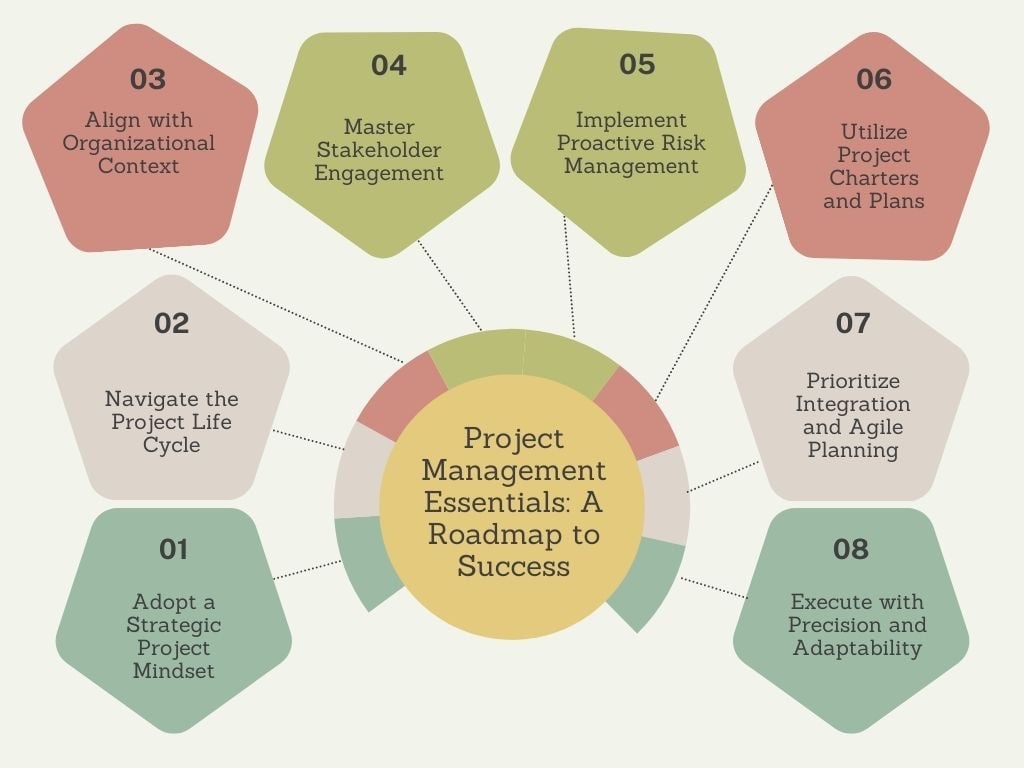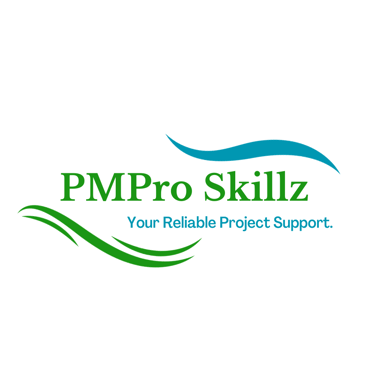The Complete Guide to Mastering Project Management
Project management isn't just ticking boxes and following rules. It's a strategic art that demands a bigger-picture perspective. In this insightful article, we'll go beyond the conventional and explore project management with a fresh, impactful approach.
Iyanna Trimmingham
6/8/20244 min read


Ever felt like you're just going through the motions with project management? Using the tools and ticking the boxes, but not really grasping the big picture? If so, you're not alone. Too often, project managers get bogged down in the details and lose sight of what really matters.
But what if I told you there's a way to take your project management skills to a whole new level? A way to truly understand the art and science behind successful projects? Buckle up, because we're about to embark on a journey that will change the way you think about project management forever.
Embracing a Comprehensive Viewpoint
Successful project management isn't just about using the right tools or following a set of rules. It's about adopting a comprehensive mindset—one that recognizes projects as unique, time-bound endeavors aimed at achieving specific business objectives. It's about understanding that every project is a strategic investment, and your role is to deliver exceptional value, ensure client satisfaction, and pave the way for career growth.
Understanding the Project Life Cycle
At the heart of effective project management lies the project life cycle. Think of it as your roadmap, guiding you through each phase of the journey. From initiation to planning, development, and closure, the life cycle breaks down your project into manageable chunks, each with its own objectives and outputs. It's like a well-choreographed dance, where you apply the right techniques and tools at the right time, ensuring a smooth and successful performance.
Adapting to Organizational Environments
But here's the thing: project management doesn't happen in a vacuum. It's deeply intertwined with the unique environment of your organization—its processes, policies, and tools. Imagine trying to sail a ship without considering the currents and winds around you. You might reach a shore, but it might not be the one you were aiming for, or worse, it could be one filled with unforeseen challenges. That's why understanding and adapting to your organizational context is crucial for reducing friction and boosting efficiency.
Stakeholder Management: A Critical Skill
Now, let's talk about the key players in your project's success story: the stakeholders. From clients and project owners to team members and subject matter experts, each stakeholder has their own set of expectations and requirements. It's like conducting a symphony, where you need to harmonize all the different instruments to create a masterpiece. Effective stakeholder management starts with identifying these key players early on and continuously throughout the project, ensuring their voices are heard and their needs are met.
Risk Management: Proactive and Continuous
Remember that old saying about expecting the unexpected? Well, in project management, risk management is your safety net. It's all about identifying potential risks early on—from the pre-sales phase, no less—and continuously throughout the project. It's about assessing their impact and planning appropriate responses to mitigate them. Think of it as your umbrella, keeping you dry and protected even when the storms of uncertainty roll in.
The Role of Project Charters and Plans
Now, let's talk about the tools that will guide you on this thrilling journey. First, we have the project charter, which sets the stage by clearly defining the project’s scope, objectives, and expectations. However, this is merely the starting point. Following the charter, the project management plan comes into play—this is your comprehensive guide for navigating the project. It details every critical aspect including the project’s scope, timeline, budget, and resource allocation. Think of it as your GPS for project management, providing step-by-step directions to ensure you stay on course and successfully reach your project's intended goals.
The Importance of Integration and Real-Time Planning
This is where things get really interesting. Imagine trying to build a house without integrating the architect's plans, the builder's expertise, and the homeowner's vision. You might end up with a house that looks flawless on the outside, but it could fall short of everyone's expectations—except perhaps your own. That's why integrating project requirements, stakeholder needs, and organizational tools into a cohesive project management plan is so crucial. And with techniques like rolling wave planning, you can progressively elaborate on project details, adapting to new information and requirements as your journey unfolds.
Executing with Precision and Adaptability
Finally, it's time to bring your plan to life—the execution phase. This is where things can go awry if you're not careful. Meticulous attention to detail, proactive stakeholder engagement, and continuous monitoring and adjustment are key. It's like conducting a symphony: you need to foster collaboration among your team members, address conflicts swiftly, and ensure everyone is in perfect harmony with the project's goals.
So, there you have it—a behind-the-scenes look at what it truly means to be a master project manager. It's not just about following a set of rules or using the right tools (although those are important, too). It's about embracing a holistic mindset, understanding the nuances of the project life cycle, adapting to your organizational environment, managing stakeholders adeptly, and maintaining robust risk management practices.
This approach doesn't just sharpen your project management skills; it enhances your capacity to lead and innovate within any organizational context, paving the way for substantial professional growth and success. So, are you ready to take your project management game to the next level?

